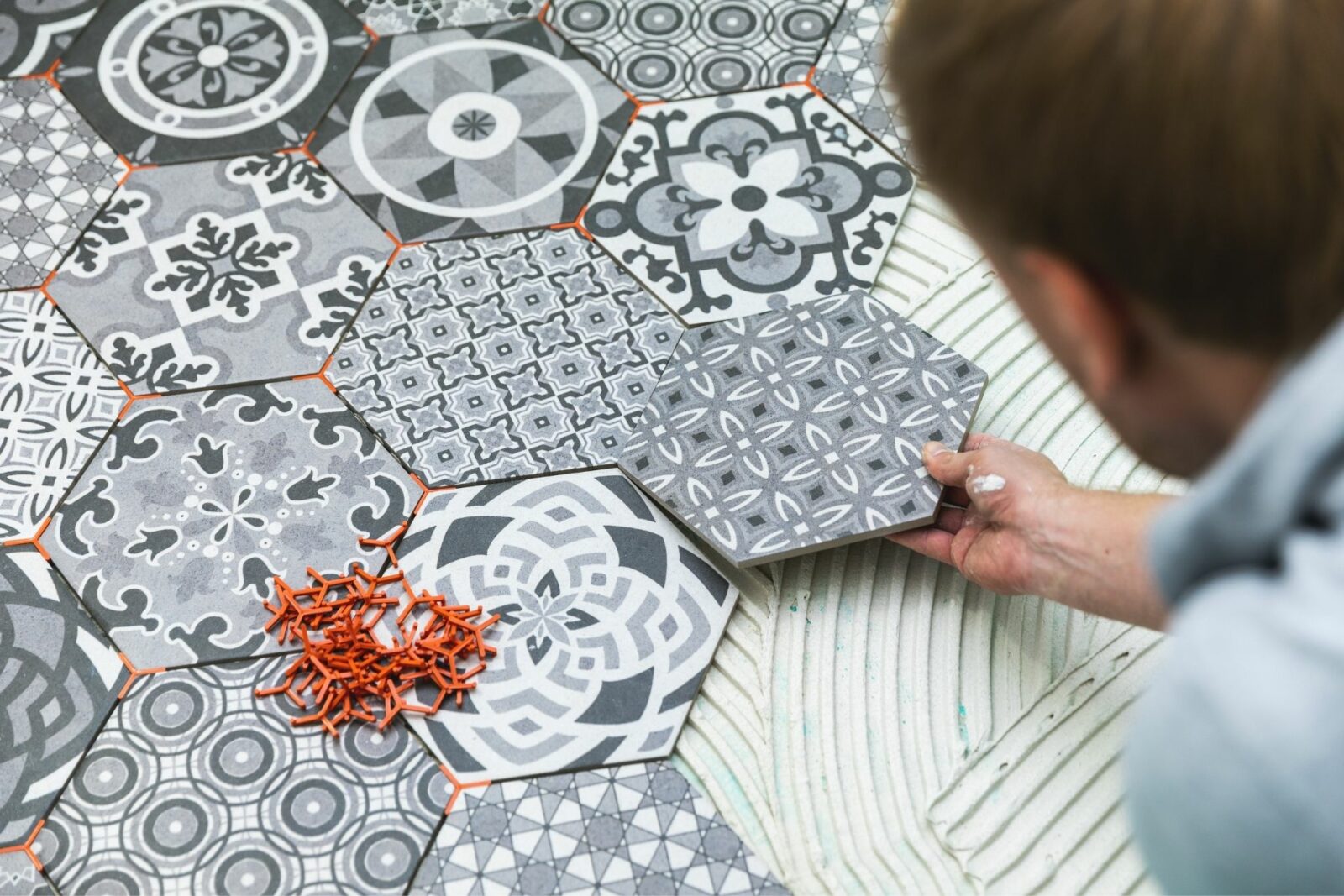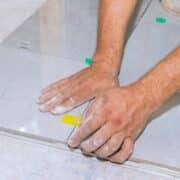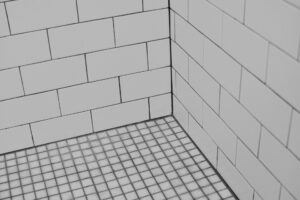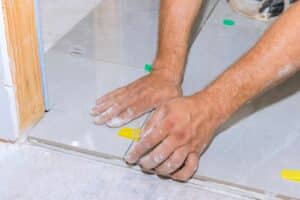You can place new tiles over existing ones and save yourself the additional task of removing your current ones.
New tiles are always exciting whether your current tiles look worn down or if you want an updated look.
However, preparing your floor for new tiles can be a burden.
New tiles change how your space reflects light, set the mood, and even serve as the perfect statement visual in an otherwise streamlined room or act as the perfect neutral canvas to make things like furniture, art, and carpets shine.
There’s nothing quite like elevating the look of your space than with a sweeping change in the look of your tiles.
You may wonder if you can tile over tiles you already have, considering that tiled floors are usually laid over concrete. Concrete is the ideal flat, sturdy, and smooth surface tile that needs to be properly laid out; these essential surface characteristics can apply to an existing tiled floor.
So, can you tile over existing tiles?
YES!
Although usually not recommended, tiles can serve as an adequate foundation for new tiles.
With that said, there are standards to follow.
Yes, you can place tiles over existing tiles, but that doesn’t mean you automatically should, as you don’t want to compromise the quality of your new floor.
Here, we lay out some ground rules to assess whether you can place new tiles over your old ones.
1. Measure The Floor Clearance
First and foremost, check if your space can accommodate another layer of tiles on top of your current set. You need to be sure that you can open things such as doors and appliances with an added layer. If adding another layer of tiles will cause a door jam, then obviously, you shouldn’t proceed with tiling over tiles.
2. Weigh Your Tiles
Your current tiles need to be heavier than your new ones.
Any sound structure requires that the lower layer be heavier and denser to support the top layer. Tiles are no exception. If your new tiles are heavier than the tiles you’ll be laying them on, it’s best to not use the lighter tiles as a base layer, regardless if the layer underneath is concrete.
Placing heavier tiles on top of light tiles will make your floor more prone to damage due to a weaker sublayer.
3. Check The Current Condition Of Existing Tiles
The same way you would assess any surface your tiles would be laid out on, a tiled foundation is no different. Installing floors require a clean, smooth, undamaged and level surface. Check your current tiles if it meets this criteria.
Rule out structural issues such as cracks, gaps, or porous areas. Any of these will cause your tiles to be more susceptible to moisture damage as they act as openings for moisture, water, and unwanted liquids to seep in.
Next, sound check your current tiles for any hollow gaps underneath that you can’t detect visually. Use a rubber mallet and gently tap on each tile. Any hollow sound will indicate that the tile is no longer properly adhered to the sublayer of concrete, showing that the tile isn’t suitable to act as a foundation. If more than 5% of your tiles sound hollow, your existing tiled floor isn’t feasible to carry a new one over it.
If all tiles sound solid, proceed to check for a smooth and even surface. When working with any flooring material, the floor will only be as sturdy, even, and straight as the foundation it’s laid on. If you want to add tiles over the existing ones, check that the old tiles provide a smooth and leveled surface for the new tiles to sit on. Any irregularities on the sublayer will show up in the new top layer which will cause problems down the line, such as cracking and poor alignment.
Should I Tile Over My Tiles?
If your existing tiled floor checks all the marks as a well-laid-out foundation for new tiles, then by all means, yes, tile over your tiles. It’s a satisfying DIY project and will save you time and money from ripping off your existing tiles before you can even proceed to prep the sublayer.
How To Tile Over Existing Tiles
If you’ve decided to add new tiles over your old tiles, here are a few steps to help you with the whole process to ensure a smooth transition to a tiled floor that’s properly installed.
- Prepare the tiles by ensuring they’re clean, leveled, dry, and free of any moisture or debris that can get sealed between the old and new tiles. You can clean the tiles with a microfiber cloth and gentle dish soap. It’s essential to make sure that the tiles are clean and dry to prevent sealing in an environment that would encourage mildew and bacterial growth.
- Lay down the adhesive using a trowel, span it evenly, and spread it out in a single direction. Ensure that there are no gaps to facilitate proper adhesion of the new tiles.
- Lay down the tiles on the freshly spread adhesive and gently press down. Allow your glue to dry and set for at least 24 hours.
- Grout and seal your tiles once they are all laid out, and it has set. Sealing off the gaps by grouting your tiles and then sealing your grout protects your new floors from liquid seeping in and damaging the sublayers.
The guidelines demystify any question as to whether or not you should place tile over tiles and how you can go about doing it if you decide to do so.
As mentioned earlier, new tiles are exciting! Whether you’re tiling over tiles or stripping off old ones to make room for new ones, a fresh new look on your floor can give a much welcomed refreshing change to your floor, making any renovation effort well worth it. This DIY job saves you time and money from a more tedious floor renovation.







